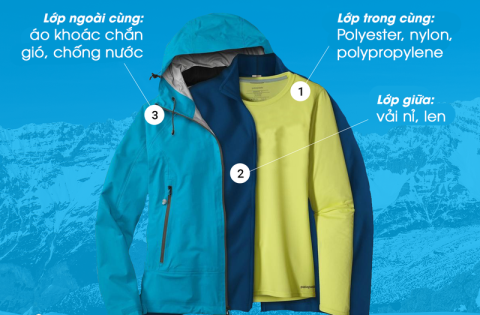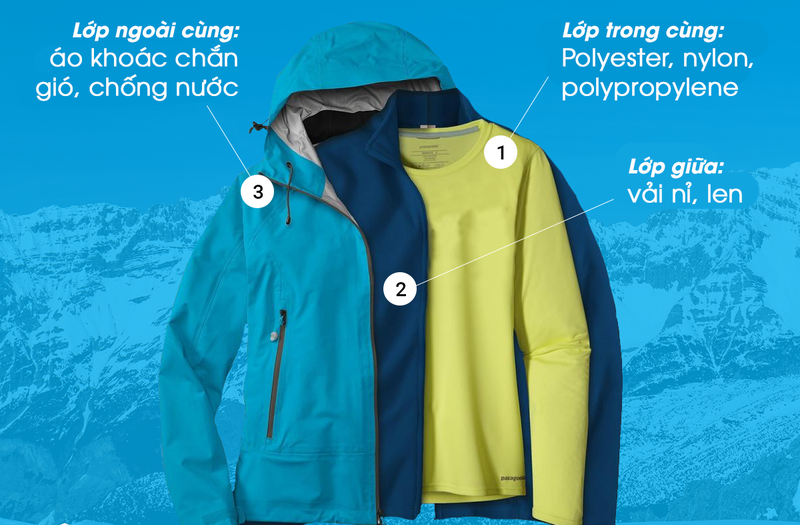How to increase cold tolerance in winter?

The large temperature difference between day and night can cause many health problems, especially for children and the elderly. So how does the body better adapt to temperature changes in winter?
The human body can adapt well when the temperature drops gradually from autumn to winter. However, when the temperature difference during the day is too large (it's cold at night and morning, sunny during the day), there are a few things you can do to improve your body's tolerance to cold.
To better adapt to the cold, you have to get out of the blanket.
The limit of human cold tolerance
The normal core temperature of the human body is 37°C. If the body is cold, hypothermia will occur. Hypothermia is a phenomenon that occurs when a person's body temperature drops below 35°C, severely affecting the nervous system, heart function and blood flow, leading to life-threatening consequences. The heart does not work well, leading to poor blood circulation to the organs, causing the body to go into shock and increasing the risk of liver and kidney failure. Children and the elderly are more at risk due to weak heart muscle. In addition, elderly people who are taking beta-blockers are more likely to experience a decrease in heart rate, increasing the risk of hypothermia in cold weather.
The danger of hypothermia depends on the degree of hypothermia. Specifically:
- Body temperature down to 35°C: Mild hypothermia;
- Body temperature drops to 32.2°C: The body's temperature compensation mechanism begins to decline, mental status may change, and the patient may even lose memory;
- Body temperature at 27.7°C: The patient begins to lose consciousness;
- Body temperature below 21°C: Severe hypothermia occurs, the person will die.
A wet body loses heat 25 times faster than in air. Normally, the body compensates for its heat by shivering and regulating blood flow from the extremities to vital organs. However, this mechanism cannot compensate for the rapid cooling in the aquatic environment. Within 20-30 minutes, depending on the water temperature, the victim's body temperature will quickly drop. Victims will die when their body temperature drops below 27°C.
Adaptation mechanism of the body
When exposed to cold air, the body uses 2 physiological responses to keep warm. First, the blood vessels circulating under the skin will constrict to reduce heat loss and maintain the functioning of more important internal organs. As a result, peripheral parts such as fingers, toes, ears, and nose will cool rapidly.
If you don't wear warm enough or stay out in the cold for too long, your body will shiver and shiver. This reflex of continuous muscle contraction helps to compensate for some of the heat, helping the body maintain a stable temperature.
People over 60 years old have less cold tolerance than younger people. Women tend to lose more heat than men, due to their bodies having a larger surface area and less muscle. People with a large percentage of body fat will always feel warmer than thin people.
Hands are the most susceptible to cold in winter.
Increase cold tolerance
To date, scientists have not completely deciphered the body's mechanism of adaptation to winter. However, when exposed to low temperatures for a long time, the body becomes less sensitive to nerve impulses that signal the feeling of cold.
Therefore, you can completely train your body to better cope in the winter. You can increase your cold tolerance by being outside for about 5 minutes a day and then gradually increasing the time over the next few days.
In addition, you should be active in physical activity in the winter. On sunny days, you can walk or jog outdoors to improve cold tolerance. You need to pay attention to warm up, warm up your body with stretching movements before exercising.
The method of wearing clothes to keep warm
In cold weather, you should only exercise or move outdoors when you have taken measures to keep your body warm. To keep your body from getting cold in winter, you need to choose at least 3 layers of clothing below:
The innermost layer
Choose lightweight, breathable fabrics. Moisture from bad breath will make you feel colder. Polyester, nylon or polypropylene are synthetic materials with good moisture permeability, often used in sportswear. Silk and wool (merino wool) are natural fabrics that are light and breathable.
Cotton (cotton fabric) should not be used as the innermost layer because cotton fibers have the ability to absorb sweat.
 Layers of clothing help keep the body warm in winter.
Layers of clothing help keep the body warm in winter.
Middle class
The middle layer of clothing has an insulating effect, helping to retain body heat. You should choose materials such as felt, felt, fleece or regular wool.
Outer layer
To combat cold wind, cold rain, you should wear a warm winter coat. On sunny days and high temperatures, you can take off this layer and still keep warm enough thanks to the second layer.
Necessary accessories
10% of body heat is lost through the head, so you should wear a hat when the weather is cold. You also need to remember to wear socks and gloves to protect your hands and feet when moving outdoors.